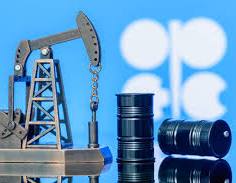The global oil and gas industry, long regarded as the financial backbone of modern economies, is now facing one of its most precarious moments in decades. Mounting debt across both state-owned and private energy companies is threatening not only the stability of the sector itself but also the broader global financial system. As markets adapt to shifting demand, climate transition pressures, and volatile prices, the balance sheets of oil giants are showing alarming stress, a trend that could reshape energy investment worldwide.
In 2025, global crude prices have swung wildly between $70 and $98 per barrel, reflecting both geopolitical uncertainty and fluctuating consumption patterns. But behind the price volatility lies a deeper structural issue: over-leveraged producers and governments, many of which expanded borrowing during the high-yield years of 2021–2023. The expectation of sustained demand led to aggressive capital expenditure, particularly in new refineries, LNG infrastructure, and exploration projects. As interest rates climbed, those debts have now become increasingly difficult to service.
Mounting Pressure from Borrowing Costs
Rising global interest rates have exposed the fragility of oil-backed economies. For emerging producers in Africa, Latin America, and the Middle East, sovereign bonds tied to oil revenue have sharply increased in yield. Countries such as Nigeria, Angola, and Ecuador are feeling the pinch, with debt servicing consuming an ever-larger share of national budgets. Even large corporates ( from Shell to Petrobras ) are now prioritizing debt reduction over expansion, a reversal from the past decade’s growth-at-all-costs approach.
In the United States, shale producers that once benefited from cheap credit are struggling with refinancing. Many smaller firms face default risks as banks tighten lending terms and investors shift toward renewable energy portfolios. Analysts from the International Energy Agency (IEA) have warned that as much as $500 billion in debt across the oil and gas supply chain may be vulnerable if interest rates remain elevated into 2026.
State-Owned Giants Under Strain
National oil companies (NOCs) ( including Saudi Aramco, Nigeria’s NNPC, and Venezuela’s PDVSA ) are under dual pressure. They must fund national budgets while maintaining vast operational networks. Saudi Arabia’s ambitious diversification program has added fiscal weight to Aramco, whose dividend obligations to the state remain substantial. Meanwhile, Nigeria’s newly restructured NNPC Ltd. continues to grapple with pipeline sabotage, fuel subsidy arrears, and foreign-exchange shortages.

In some cases, governments have mortgaged future oil output to foreign creditors, particularly from China and Western investment banks. These pre-export financing arrangements have locked several countries into long-term commitments that erode fiscal independence. Critics argue this is setting the stage for a debt spiral reminiscent of the 1980s oil bust, when global lenders faced billions in defaults.
The Transition Paradox
The global shift toward cleaner energy has complicated recovery prospects. While policymakers push for decarbonization, the oil and gas sector remains crucial to short-term energy stability. This tension discourages investment in both fossil fuels and renewables, leaving many companies trapped in transitional uncertainty. Investors demand higher returns to compensate for climate-related risks, pushing borrowing costs even higher.
IEA Director Fatih Birol recently cautioned that “the world is entering a dangerous middle ground – not investing enough in old energy or new energy,” emphasizing that inadequate planning could lead to both supply disruptions and financial instability.
Market Reactions and the Road Ahead
Oil markets have responded cautiously. Equity valuations of major producers remain relatively strong, buoyed by short-term profit margins, but bond spreads tell a different story. Credit-default swaps (CDS) for energy debt have widened by nearly 40 percent since mid-2024, reflecting investor anxiety about repayment capabilities.
Experts now call for coordinated international frameworks to stabilize oil-linked debt. The IMF and World Bank have proposed restructuring mechanisms for resource-dependent nations, while private creditors advocate for new financial instruments tied to sustainability outcomes.
Ultimately, the oil and gas sector’s debt dilemma underscores a larger truth: the global economy remains deeply intertwined with fossil fuel finance. As long as energy demand outpaces the pace of transition, the burden of debt will remain a potent symbol of both economic ambition and systemic risk. Whether nations and corporations can recalibrate before the next price shock will define the trajectory of the energy market for the next decade.

